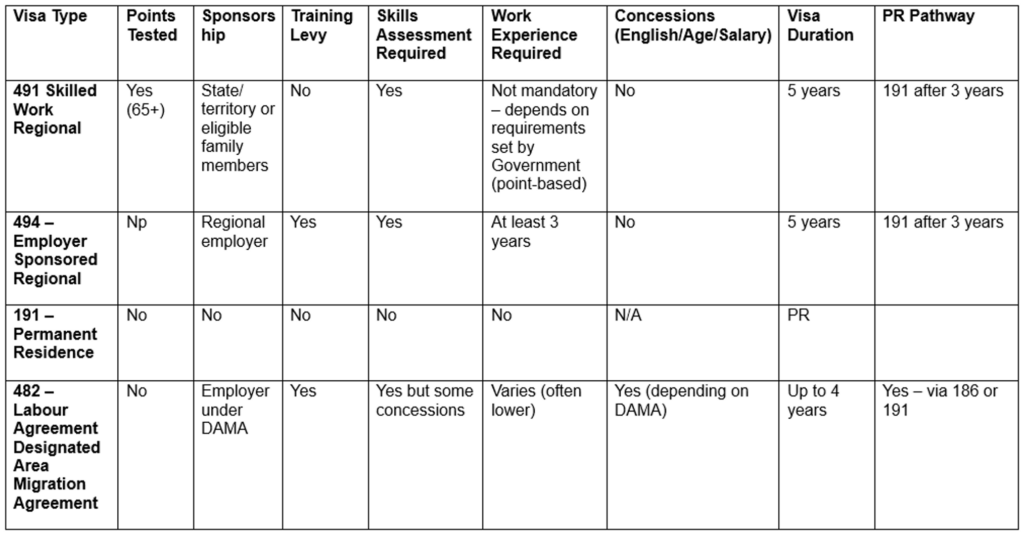Employers in regional areas are able to access some additional visa pathways for their employees. Generally, these are not preferred by employers and employees because additional eligibility criteria can add costs and delays to the pre-lodgment process and employees are restricted to working only in a regional area. However, these visas can provide a solution where a 482 visa might not be available and so are worth keeping as an option in the right case.
What is considered regional ?
The Australian Government defines “regional” as any postcode outside Sydney, Melbourne, and Brisbane. It divides Australia into 3 categories.

Both Category 2 and 3 qualify for regional visas – 491, 494 and 191, and Category 3 often enjoys extra incentives like more skilled migration points and faster processing.
In addition, Designated Area Migration Agreements cover specific category 2 and 3 areas that can include multiple regional centres and cities.
Regional visa types – key features
There are specific visa types for regional Australia. They are only for people who will live and work in regional Australia.
Employers must have operations in the regions to be able to sponsor 494 visas.
482 visas are also available under a special Labour Agreement Stream known as Designated Area Migration Agreements. These are regionally negotiated Labour Agreements ‘owned’ by the local region and designed to help those regions attract workers in occupations with labour shortages either because of the location or because of a major infrastructure project draining local talent.

Quick comparison of regional to 482 visas
In most cases 482 visas are preferred by our clients because they are a well-known path. They are generally the most suitable option given the needs of both the employer and employee. However, regional visas can provide some benefits over 482 visas and can be the most suitable option in some cases where a 482 is not available or not preferred.

Conditions on regional visa holders (and employers)
The usual sponsorship obligations apply to the 494 visa.
In addition, businesses must be lawfully operating in a designated regional area of Australia to be eligible to sponsor under this visa.
Visa holders are required to live, work, and study exclusively in designated regional areas for the duration of the visa, which is up to five years. Regional visa holders may live and work outside of a regional area for
• holidays
• work-related travel
• work-related training
Visa holders must advise the Department within 14 days of any changes to the personal information or circumstances.
Relocating
The Department understand that it may take a little time for someone to relocate to regional Austalia. Under policy the Department states:
- If the person is already living and working in Australia (not in a regional area) then it is intended to allow a reasonable amount of time for the visa holder to move to a regional area. This will depend on individual circumstances, noting that it may take a number of months for a family to relocate.
- Persons granted a Subclass 491 or Subclass 494 visa while residing outside Australia have more opportunity to make arrangements between being granted their visa and arriving in Australia. While remaining flexible in relation to individual circumstances, it would generally be reasonable to expect that they would establish living arrangements in a regional area within a month of arrival.
If you are interested in learning more about regional visa options, just contact your Ajuria team or email info@ajurialawyers.com
The post Regional Visa Options first appeared on Ajuria Lawyers – Leaders in Immigration.








